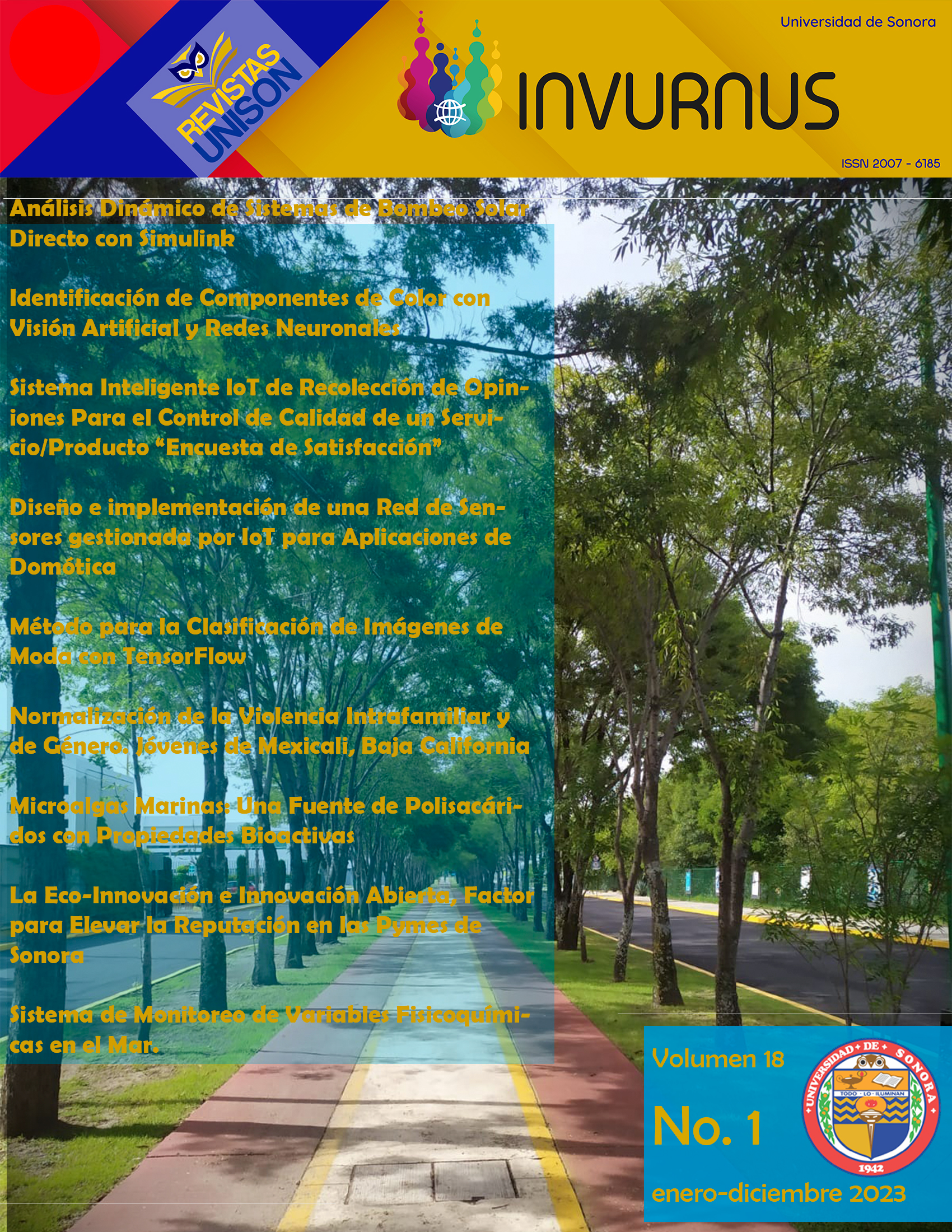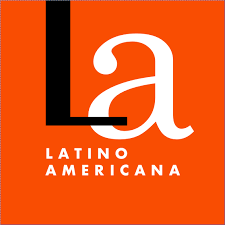The ECO-INNOVATION AND OPEN INNOVATION, A FACTOR TO RAISE THE REPUTATION OF SMEs IN SONORA.
DOI:
https://doi.org/10.46588/invurnus.v18i1.92Keywords:
Eco-Innovation (EI), Open Innovation (AI), Corporate Reputation (ER), Small and Medium Enterprises (SMEs).Abstract
The present work consists of examining the effects of eco-innovation and open innovation as a determinant element to increase the business reputation of SMEs. The research is based on a sample of 101 companies located in the region of Guaymas, Sonora, located in Northwest Mexico. The data collection was carried out in a period between September and November 2019, with the support of a structured instrument (survey) directed to the manager of the organization. For the analysis and validation of the results, the statistical technique of structural equation modeling (SEM) based on variance through PLS (Partial Least Square) was used. The results indicate that eco-innovation and open innovation have a significant influence on the business reputation of SMEs, and that implementing processes focused on environmental care through the combination of technology and knowledge is a business practice that allows raising the image before internal and external stakeholders in the business environment. The work contributes to the development of the literature and theory of sustainability, innovation and dynamic capabilities for business competitiveness in SMEs.
Downloads
References
Aagaard, A. (2016). Sustainable Business: River Publishers. Retrieved from https://books.google.com.mx/books?id=ExvkDAAAQBAJ
Aagaard, A., & Lindgren, P. (2016). Exploring the Concept and Incentives of Sustainable Business Models. Journal of Multi Business Model Innovation and Technology, 4(1), 35–46. https://doi.org/10.13052/jmbmit2245-456x.412
Abrahamson, E. (1991). Managerial Fads and Fashions: The Diffusion and Rejection of Innovations. Academy of Management Review, 16(3), 586–612. https://doi.org/10.5465/amr.1991.4279484
Ahi, P., & Searcy, C. (2013). A comparative literature analysis of definitions for green and sustainable supply chain management. Journal of Cleaner Production, 52, 329–341. https://doi.org/10.1016/j.jclepro.2013.02.018
Álvarez-Aros, E. L., & Bernal-Torres, C. A. (2017). Modelo de Innovación Abierta: Énfasis en el Potencial Humano. Informacion Tecnologica, 28(1), 65–76. https://doi.org/10.4067/S0718-07642017000100007
Andreeva, T., & Ritala, P. (2016). What are the sources of capability dynamism? Reconceptualizing dynamic capabilities from the perspective of organizational change. Baltic Journal of Management, 11(3), 238–259. https://doi.org/10.1108/BJM-02-2015-0049
Avellaneda Rivera, L. M. (2017). Eco-Innovación Abierta En Sectores Tradicionales. Análisis Aplicado Al Sector Turístico Y Agroalimentario En España. 362. Retrieved from https://ruidera.uclm.es/xmlui/handle/10578/15231
Bocquet, R., Le Bas, C., Mothe, C., & Poussing, N. (2019). Strategic CSR for innovation in SMEs: Does diversity matter? Long Range Planning, 52(6). https://doi.org/10.1016/j.lrp.2019.101913
Çakar, N. D., & Ertürk, A. (2010). Comparing Innovation Capability of Small and Medium‐Sized Enterprises: Examining the Effects of Organizational Culture and Empowerment. Journal of Small Business Management, 48(3), 325–359. https://doi.org/10.1111/j.1540-627X.2010.00297.x
Carrizo, G. C. (2017). Pymes y emprendedores: innovación para salir de la crisis. Artículo Especial / Rev Esp Cardiol, 67136(2), 1–56. Retrieved from http://appswl.elsevier.es/watermark/ctl_servlet?_f=10&pident_articulo=90267575&pident_usuario=0&pcontactid=&pident_revista=25&ty=95&accion=L&origen=cardio&web=www.revespcardiol.org&lan=es&fichero=25v67n02a90267575pdf001.pdf&anuncioPdf=ERROR_publi_pdf
Carter, C. R., & Rogers, D. S. (2008). A framework of sustainable supply chain management: moving toward new theory. International Journal of Physical Distribution & Logistics Management, 38(5), 360–387. https://doi.org/10.1108/09600030810882816
Carvalho Proença, J. J. (2019). Innovación en modelos de colaboración y emprendimiento collaboration and entrepreneurship innovation models. Horizontes Empresariales, 18(2), 21–32. Retrieved from http://search.ebscohost.com/login.aspx?direct=true&AuthType=sso&db=fua&AN=140352901&site=eds-live&custid=s2430210
Chakroun, S., Salhi, B., Ben Amar, A., & Jarboui, A. (2019). The impact of ISO 26000 social responsibility standard adoption on firm financial performance. Management Research Review, 43(5), 545–571. https://doi.org/10.1108/MRR-02-2019-0054
Chiang, Y.-H., & Hung, K.-P. (2010). Exploring open search strategies and perceived innovation performance from the perspective of inter-organizational knowledge flows. R&D Management, 40(3), 292–299. https://doi.org/https://doi.org/10.1111/j.1467-9310.2010.00588.x
Chin, W. W. (1998a). Commentary: Issues and Opinion on Structural Equation Modeling. MIS Quarterly, 22(1), vii–xvi. Retrieved from http://www.jstor.org/stable/249674
Chin, W. W. (1998b). Issues and Opinion on Structural Equation Modeling. MIS Quarterly, 22(1), 1. https://doi.org/Editorial
Chin, W. W., & Dibbern, J. (2010). Handbook of Partial Least Squares. In Handbook of Partial Least Squares. https://doi.org/10.1007/978-3-540-32827-8
Cifuentes, I. O., & León, I. M. M. (2011). Measure of corporate reputation in service SMEs. Revista Europea de Dirección y Economía de La Empresa, 20(3), 77–102.
Crossan, M. M., & Apaydin, M. (2010). A Multi-Dimensional Framework of Organizational Innovation: A Systematic Review of the Literature. Journal of Management Studies, 47(6), 1154–1191. https://doi.org/10.1111/j.1467-6486.2009.00880.x
Cruz González, J., López, P., Profesor, S., Doctor, C., Martín, G., Castro, D., … De Castro, M. (2009). La Influencia de las Capacidades Dinámicas sobre los Resultados Financieros de la Empresa The Influence of Dynamic Capabilities on the Company’s Financial Performance. Cuadernos de Estudios Empresariales, 19(19), 105–128.
del Río, P., Carrillo-Hermosilla, J., & Könnölä, T. (2010). Policy Strategies to Promote Eco-Innovation. Journal of Industrial Ecology, 14(4), 541–557. https://doi.org/https://doi.org/10.1111/j.1530-9290.2010.00259.x
Drucker, P. (2014). Innovation and entrepreneurship : practice and principles.
Escobar, T. V. & S. (2017). DE INNOVACIÓN ABIERTA , TALLERES EMPRESARIALES DE INNOVACIÓN Y CREATIVIDAD APLICADA ( TEICA ). 8–27.
Fassott, G. (2010). Handbook of Partial Least Squares. Handbook of Partial Least Squares, 713–714. https://doi.org/10.1007/978-3-540-32827-8
Galvis Ardila, Y., & Silva Agudelo, M. C. (2016). Comunication: reputation and company development. Revista Científica Pensamiento y Gestión, NA(41), 194–239. https://doi.org/10.14482/pege.41.9711
Garzón Castrillón, M. A. (2017). MODELO DE CAPACIDADES DINÁMICAS. Dimensión Empresarial, 13(1 SE-), 111–131. https://doi.org/10.15665/rde.v13i1.341
Gutman, V., Torcuato, F., Tella, D., Lopez, A., & Ryan, R. E. O. (2017). C O I N N O V a C I Ó N Y P R O D U C C I Ó N V E R D E. (August 2018).
Hahn, R., & Kühnen, M. (2013). Determinants of sustainability reporting: A review of results, trends, theory, and opportunities in an expanding field of research. Journal of Cleaner Production, 59(November 2013), 5–21. https://doi.org/10.1016/j.jclepro.2013.07.005
Hair, J. F., Hult, G. T. M., Ringle, C. M., Sarstedt, M., & Thiele, K. O. (2017). Mirror, mirror on the wall: a comparative evaluation of composite-based structural equation modeling methods. Journal of the Academy of Marketing Science, 45(5), 616–632. https://doi.org/10.1007/s11747-017-0517-x
Hair J. F. Jr. , Marko Sarstedt , Christian M. Ringle, S. P. G. (2017). Advanced Issues in Partial Least Squares Structural Equation Modeling - Joseph F. Hair, Jr., Marko Sarstedt, Christian M. Ringle, Siegfried P. Gudergan - Google Libros (SAGE, Ed.).
Hatala, J. P. (2005). Identifying Barriers to Self Employment: The Development and Validation of the Barriers to Entrepreneurship Success Tool. Performance Improvement, 18(4), 50–70. https://doi.org/10.1111/j.1937-8327.2005.tb00350.x
Henseler, J., Hubona, G., & Ray, P. A. (2016). Using PLS path modeling in new technology research: updated guidelines. Industrial Management & Data Systems, 116(1), 2–20. https://doi.org/10.1108/IMDS-09-2015-0382
Horbach, J., Rammer, C., & Rennings, K. (2012). Determinants of eco-innovations by type of environmental impact — The role of regulatory push/pull, technology push and market pull. Ecological Economics, 78, 112–122. https://doi.org/https://doi.org/10.1016/j.ecolecon.2012.04.005
INEGI. (2018). Economic Census, summary of the final results. Mexico.
Maldonado-Guzmán, G., Garza-Reyes, J. A., & Pinzón-Castro, Y. (2020). Eco-innovation and the circular economy in the automotive industry. Benchmarking, 28(2), 621–635. https://doi.org/10.1108/BIJ-06-2020-0317
Maldonado Guzmán, García Ramírez, M. Z. & C. E. (2021). 10.- INNOVACIÓN ABIERTA, CRECIMIENTO Y RENDIMIENTO EN LA PYME DE LA INDUSTRIA AUTOMOTRIZ DE MÉXICO.pdf.
Marin-Garcia, J. A., & Alfalla-Luque, R. (2019). Protocol: How to deal with Partial Least Squares (PLS) research in Operations Management. A guide for sending papers to academic journals. WPOM-Working Papers on Operations Management, 10(1), 29. https://doi.org/10.4995/wpom.v10i1.10802
Martín-de Castro, G., & López, J. (2006). La importancia de la reputación empresarial en la obtención de ventajas competitivas sostenibles. Investigaciones Europeas de Dirección y Economía de La Empresa, ISSN 1135-2523, Vol. 12, No 3, 2006, Pags. 29-38, 12.
Martínez Ávila, M., & Fierro Moreno, E. (2018). Aplicación de la técnica PLS-SEM en la gestión del conocimiento: un enfoque técnico práctico / Application of the PLS-SEM technique in Knowledge Management: a practical technical approach. In RIDE Revista Iberoamericana para la Investigación y el Desarrollo Educativo (Vol. 8). https://doi.org/10.23913/ride.v8i16.336
McWilliams, A., Parhankangas, A., Coupet, J., Welch, E., & Barnum, D. T. (2016). Strategic Decision Making for the Triple Bottom Line. Business Strategy and the Environment, 25(3), 193–204. https://doi.org/10.1002/bse.1867
Mebratu, D. (1998). Sustainability and sustainable development: Historical and conceptual review. Environmental Impact Assessment Review, 18(6), 493–520. https://doi.org/10.1016/S0195-9255(98)00019-5
Mishra, D. R. (2017). Post-innovation CSR Performance and Firm Value. Journal of Business Ethics, 140(2), 285–306. https://doi.org/10.1007/s10551-015-2676-3
Moratis, L., & Cochius, T. (2017). ISO 26000: The Business Guide to the New Standard on Social Responsibility. Taylor & Francis.
Nonaka, I., & Toyama, R. (2003). The knowledge-creating theory revisited: knowledge creation as a synthesizing process. Knowledge Management Research & Practice, 1(1), 2–10. https://doi.org/10.1057/palgrave.kmrp.8500001
O’Brien, M., Bleischwitz, R., Bringezu, S., Fischer, S., Ritsche, D., Steger, S., … Saarinen, L. A. (2011). The eco-innovation challenge : pathways to a resource-efficient Europe ; annual report 2010. Brussels: Eco-Innovation Observatory.
O’Brien, M., Bleischwitz, R., Steger, S., Fischer, S., Miedzinski, M., Campregher, C., … Karjalainen, A. (2013). Europe in transition : paving the way to a green economy through eco-innovation ; annual report 2012. Brussels: Eco-Innovation Observatory.
Pavón Hernández, A., Hernández Vega, A., Suárez Hernández, J., Jiménez Valero, B., & Sánchez Rodríguez, J. (2015). Análisis de los modelos de Innovación Abierta. Ventajas de su aplicación. Avanzada Científica, 18(3), 32–44.
Pinzón, S., Gonzalo, M., & Pérez, R. (2020). Open Innovation and Eco-Innovation Practices in Mexican Manufacturing Companies. Scientific E-Journal of Human Sciences, 34–47.
Portillo-Tarragona, P., Scarpellini, S., & Marín-Vinuesa, L. M. (2017). La Eco-innovación en la empresa: características financieras y organización. Gestión. Revista de Economía, 65(julio-diciembre 2017), 10–15.
Quinn, R. E., & Rohrbaugh, J. (2011). A Spatial Model of Effectiveness Criteria : Towards a Competing Values Approach to Organizational Analysis A SPATIAL MODEL OF EFFECTIVENESS CRITERIA : TOWARDS A COMPETING VALUES APPROACH TO ORGANIZATIONAL ANALYSIS *. 29(3), 363–377.
Rajeev, A., Pati, R. K., Padhi, S. S., & Govindan, K. (2017). Evolution of sustainability in supply chain management: A literature review. Journal of Cleaner Production, 162, 299–314. https://doi.org/10.1016/J.JCLEPRO.2017.05.026
Ram, S., Titular, P., & Titular, P. (2018). Co-creación e innovación abierta : Revisión sistemática de literatura. 9–18.
Ringle, C., Wende, S., & Becker, J. (2017). SmartPLS—Statistical Software For Structural Equation Modeling.
Schuberth, F., Henseler, J., & Dijkstra, T. K. (2018). Partial least squares path modeling using ordinal categorical indicators. Quality & Quantity, 52(1), 9–35. https://doi.org/10.1007/s11135-016-0401-7
Segarra-Oña, M., Peiró-Signes, A., Miret-Pastor, L., & Albors-Garrigós, J. (2011). ¿Eco-innovación, una evolución de la innovación? Análisis empírico en la industria cerámica española. Boletin de La Sociedad Espanola de Ceramica y Vidrio, 50(5), 253–260. https://doi.org/10.3989/cyv.332011
Sethi, S. P., Rovenpor, J. L., & Demir, M. (2017). Enhancing the Quality of Reporting in Corporate Social Responsibility Guidance Documents: The Roles of ISO 26000, Global Reporting Initiative and CSR-Sustainability Monitor. Business and Society Review, 122(2), 139–163. https://doi.org/https://doi.org/10.1111/basr.12113
Shiau, W. L., Sarstedt, M., & Hair, J. F. (2019). Internet research using partial least squares structural equation modeling (PLS-SEM). Internet Research, 29(3), 398–406. https://doi.org/10.1108/IntR-10-2018-0447
Singh, S., Olugu, E. U., Musa, S. N., & Mahat, A. B. (2018). Fuzzy-based sustainability evaluation method for manufacturing SMEs using balanced scorecard framework. Journal of Intelligent Manufacturing, 29(1), 1–18. https://doi.org/10.1007/s10845-015-1081-1
Spence, L. J. (2016). Small Business Social Responsibility. Business & Society, 55(1), 23–55. https://doi.org/10.1177/0007650314523256
Teece, D. J. (2007). Explicating Dynamic Capabilities: The Nature and Microfoundations of (Sustainabile) Enterprise Performance. Strategic Management Journal, 298(13), 1319–1350.
Teece, D. J. (2010). Business models, business strategy and innovation. Long Range Planning, 43(2–3), 172–194. https://doi.org/10.1016/j.lrp.2009.07.003
Teece, D. J. (2018). Business models and dynamic capabilities. Long Range Planning, 51(1), 40–49. https://doi.org/https://doi.org/10.1016/j.lrp.2017.06.007
Torres Rivera, A. D., García Ocampo, R. A., & Jiménez Vázquez, C. (2011). Eco-innovación, fuente de ventaja competitiva para las pymes. XV Congreso Internacional de Investigación En Ciencias Administrativas, 280–294. Retrieved from http://acacia.org.mx/busqueda/pdf/15_17_eco_innovacion.pdf
Triguero, A., Moreno-Mondéjar, L., & Davia, M. A. (2013). Drivers of different types of eco-innovation in European SMEs. Ecological Economics, 92, 25–33. https://doi.org/https://doi.org/10.1016/j.ecolecon.2013.04.009
Tucci, C. L., Chesbrough, H., Piller, F., & West, J. (2016). When do firms undertake open, collaborative activities? Introduction to the special section on open innovation and open business models. Industrial and Corporate Change, 25(2), 283–288. https://doi.org/10.1093/icc/dtw002
Usman, M., & Vanhaverbeke, W. (2017). How start-ups successfully organize and manage open innovation with large companies. European Journal of Innovation Management, 20(1), 171–186. https://doi.org/10.1108/EJIM-07-2016-0066
Valdez-Juárez, L. E., Ramos-Escobar, E. A., Gúzman, G. M., & Ruiz-Zamora, J. A. (2020). Open Innovation and CSR, Determinants in Logistics and Performance in Commercial SMES. International Business Research, 13(2). Retrieved from https://econpapers.repec.org/RePEc:ibn:ibrjnl:v:13:y:2020:i:2:p:50
Van Oorschot, J. A. W. H., Hofman, E., & Halman, J. I. M. (2018). A bibliometric review of the innovation adoption literature. Technological Forecasting and Social Change, 134, 1–21. https://doi.org/10.1016/j.techfore.2018.04.032
Vence, X., & Pereira, Á. (2019). Eco-innovation and Circular Business Models as drivers for a circular economy. Contaduria y Administracion, 64(1), 1–19. https://doi.org/10.22201/fca.24488410e.2019.1806
Wikhamn, B. R., & Styhre, A. (2017). Open Innovation as a Facilitator for Corporate Exploration. International Journal of Innovation Management, 21(06), 1750042. https://doi.org/10.1142/S1363919617500426
Zhao, Z., Meng, F., He, Y., & Gu, Z. (2019). The Influence of Corporate Social Responsibility on Competitive Advantage with Multiple Mediations from Social Capital and Dynamic Capabilities. Sustainability, 11(1), 218. https://doi.org/10.3390/su11010218
Downloads
Published
How to Cite
Issue
Section
License
Copyright (c) 2023

This work is licensed under a Creative Commons Attribution-NonCommercial 4.0 International License.












